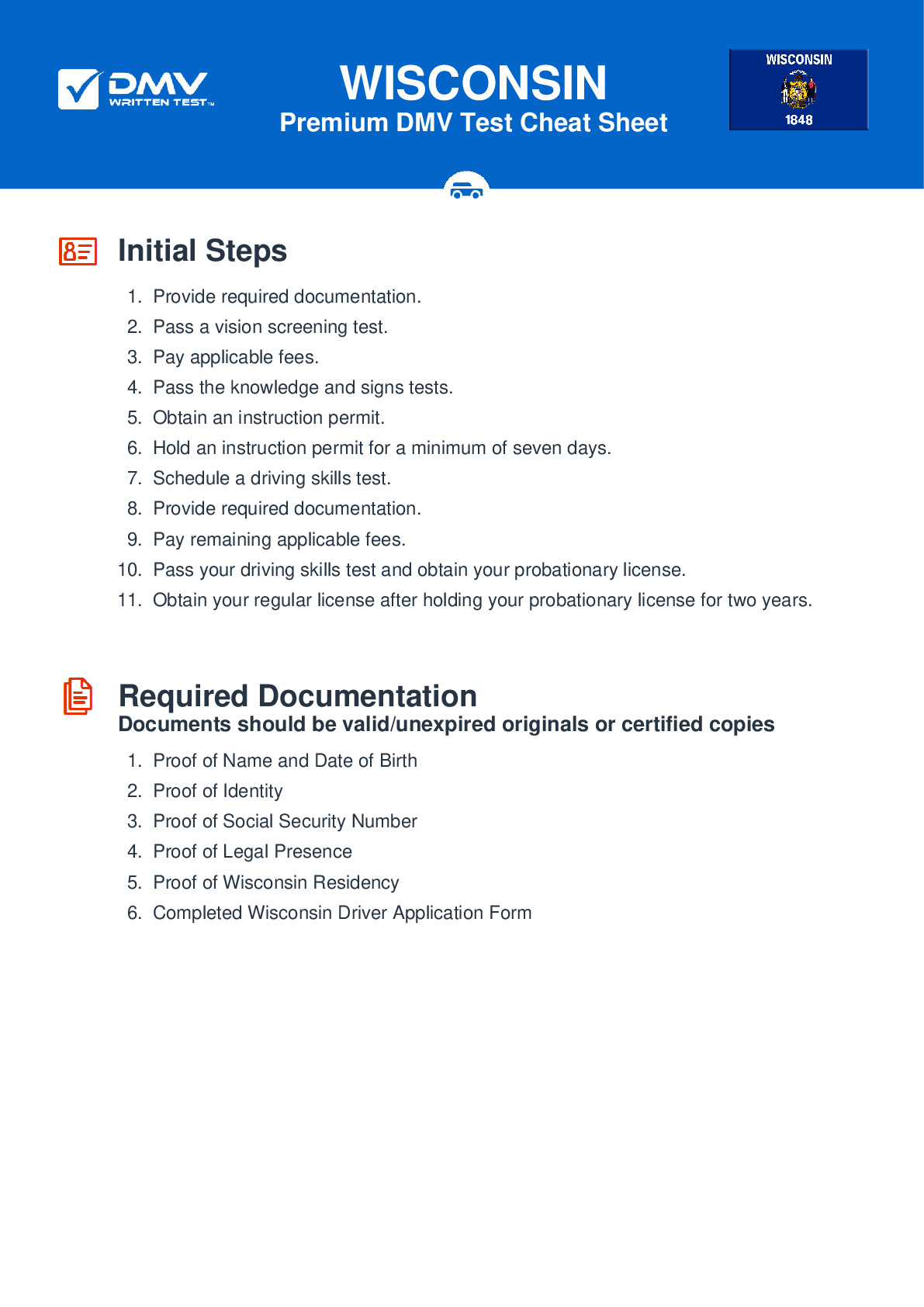2025 Wisconsin Permit Test 2
The following questions are from real DMV written tests. These are some of the actual permit questions you will face in Wisconsin. Each permit practice test question has three answer choices. Select one answer for each question and select "grade this section." You can find this button at the bottom of the drivers license quiz. For a complete list of questions and answers for Wisconsin please visit https://cheat-sheets.dmv-written-test.com/en/wisconsin/car.
Number of Tests
Number of Question
Passing Score
1. When approaching a railroad crossing warning sign:
Explanation
Railroad crossing warning signs are used to warn drivers of the possibility of a train. Drivers should obey all railroad crossing warning signs and never go around barriers or disregard the warning sign.
2. Do not pass:
Explanation
You should never pass if there is an oncoming vehicle in the passing lane, if your view is blocked by a curve or hill, at an intersection, before or on a railroad crossing or bridge, or in any other no passing zone. Unless you are on the opposite side of a multilane roadway with a median or shared center turn lane, you may not pass a stopped school bus that has its flashing red lights activated.
3. When taking any medicine, you should:
Explanation
Legal medications, both prescription and over-the-counter, can potentially impair your ability to drive. Always consult with your doctor or pharmacist if you have questions about how a particular drug or drug combination will affect your ability to drive. You should particularly make a point of talking with your doctor if they give you a prescription for a tranquilizer or sedative.
4. Consuming which of the following substances may impair your ability to drive safely and may result in an arrest for driving under the influence of intoxicants (DUII)?
Explanation
A wide variety of intoxicants can impair your ability to drive. These include all types of alcoholic beverages, illegal drugs, inhalants, and many legal medications (both prescription and over-the-counter).
5. If involved in an accident, a driver should:
Explanation
If you are involved in an accident, you must stop at or near the scene. Move your vehicle out of the way of traffic, if possible. Do not stand or walk in traffic lanes as you could be struck by another vehicle. Turn off the ignitions of wrecked vehicles.
6. The most effective thing you can do to reduce your risk of being injured or killed in a traffic crash is to:
Explanation
Wearing your seat belt is the single most effective thing you can do to reduce your risk of death or injury while driving.
7. Blind spots are:
Explanation




